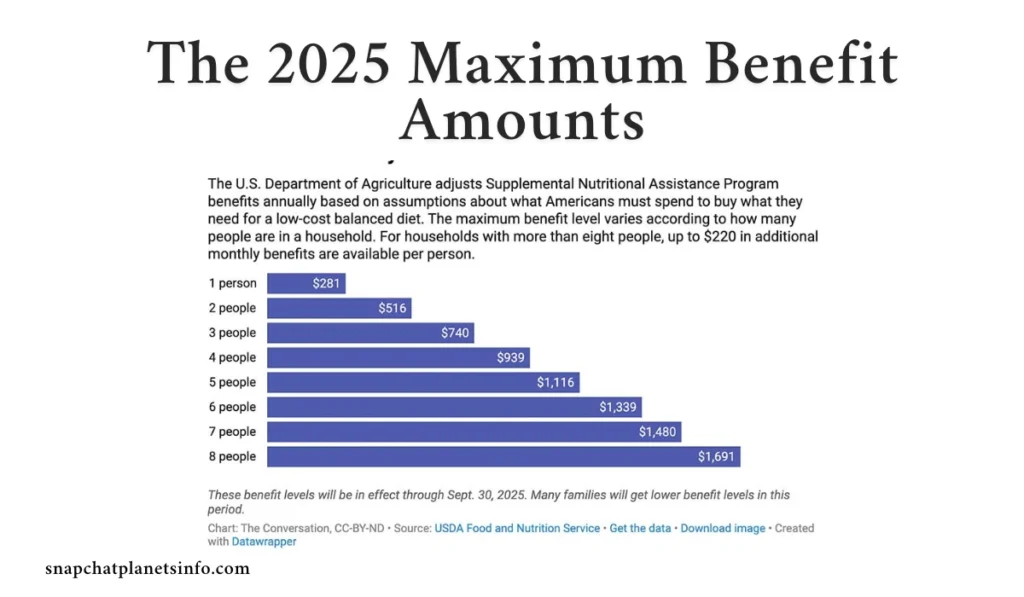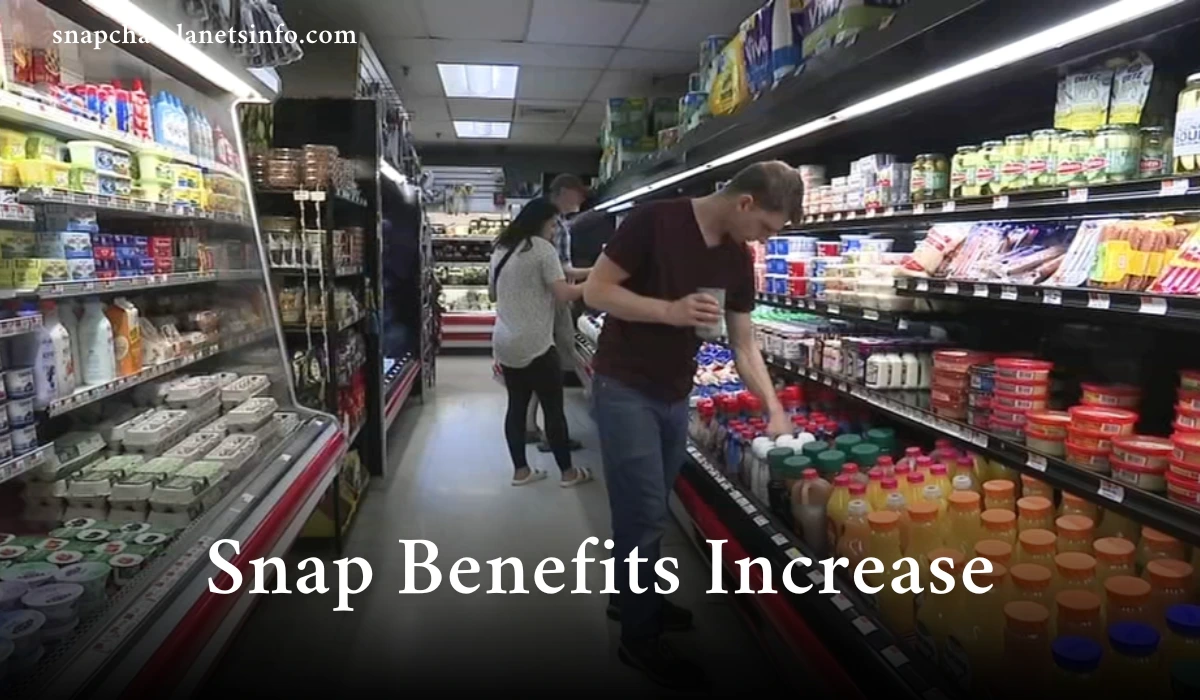The Supplemental Nutrition Assistance Program (SNAP) plays a vital role in helping families put food on the table. With rising costs, the Snap Benefits Increase in 2025 brings renewed support to millions of Americans facing food insecurity. These changes aim to keep pace with inflation and ensure access to healthy meals across the nation.
Why the SNAP Benefits Increase Matters
Food prices have continued to rise, placing extra pressure on low-income families. The federal government responded by permanently increasing SNAP benefits. This move is especially significant in rural areas where economic recovery has lagged. The 2025 snap benefits increase helps individuals and communities recover from the lasting effects of the COVID-19 crisis.
Timeline and Origin of the Increase
In June 2021, the USDA reevaluated the Thrifty Food Plan (TFP), a guide used to calculate SNAP benefits. This was the first comprehensive reevaluation in 15 years. The updated plan reflected modern dietary guidelines and the real cost of nutritious food. The result was the largest permanent snap benefits increase in the program’s history.
By October 2021, new benefit levels took effect. These adjustments continued into 2025 through cost-of-living updates. The USDA ensures these benefits match real-world food prices and economic needs.
The 2025 Maximum Benefit Amounts

The 2025 snap benefits increase applies across all 48 contiguous states and D.C., with adjustments for Alaska, Hawaii, Guam, and the U.S. Virgin Islands. The maximum monthly benefits are listed in the table below:
| Household Size | Maximum Monthly Benefit |
|---|---|
| 1 Person | $292 |
| 2 People | $536 |
| 3 People | $768 |
| 4 People | $975 |
| 5 People | $1,158 |
| 6 People | $1,390 |
| 7 People | $1,536 |
| 8 People | $1,756 |
| Each Additional | +$220 |
These amounts show a significant shift from previous years. For example, a family of four now receives $975 compared to roughly $835 before the policy change.
Read more: Can dogs eat snap peas
Rural Communities See the Most Impact
Recent USDA studies show that rural areas benefit more from SNAP than urban regions. This is because money spent on food circulates locally and boosts small businesses. Every dollar from SNAP creates up to $1.50 in local economic activity. The snap benefits increase means more grocery store purchases, more employment, and more economic stability.
In states like New Hampshire, with large rural populations, this increase can reduce disparities between regions. It also offers vital support for elderly residents and working families with low wages.
Pandemic Lessons and Recovery
The COVID-19 pandemic led to temporary SNAP boosts, including a 15% increase that expired in 2021. However, the permanent snap benefits increase introduced in 2021 and continued into 2025 provides more sustainable support. Families who lost jobs or faced health crises can now rely on more predictable help from the program.
These changes also prevented a larger spike in food insecurity. According to federal data, increased benefits helped thousands of families avoid hunger during the crisis. The current levels aim to maintain this support through the post-pandemic recovery period.
Nutrition and Health Impacts
The SNAP program is not only about feeding people but also improving health. Better benefits mean people can afford fresh produce, lean meats, and whole grains. The snap benefits increase empowers households to buy more balanced meals instead of relying on cheaper, unhealthy options.
Research shows that households with access to enough nutritious food experience lower rates of diabetes, heart disease, and obesity. Healthier children also perform better in school and grow up with stronger immune systems.
State-Level Economic Boost
The economic benefits of increased SNAP allotments go beyond the individual. States see higher consumer spending, increased employment in retail and agriculture, and stronger tax revenues. In 2025, the USDA estimated that the benefits boost would pump over $28 million into New Hampshire’s economy alone.
The snap benefits increase creates a ripple effect. Grocery stores hire more workers, transport companies handle more food deliveries, and farmers see more demand. This type of economic multiplier is crucial in states with fragile or recovering job markets.
Eligibility and Standard Deductions
The USDA has also updated eligibility calculations to reflect modern household budgets. Standard deductions have risen. In 2025, a household of one to three people receives a $204 standard deduction, up from $177 in prior years.
These new thresholds allow more people to qualify for assistance. The asset limit also increased to $3,000 for most households and $4,500 for those with seniors or disabled members. The snap benefits increase now reaches a broader portion of the population.
Changes in Work Requirements
Able-bodied adults without dependents (ABAWDs) must meet work requirements to receive benefits. In 2025, the age bracket expanded to 18-54. However, exemptions still apply for veterans, homeless individuals, and pregnant women.
While the snap benefits increase strengthens support, these requirements aim to encourage job-seeking and workforce participation. Balancing support and independence remains a focus of the program.
Read more: Texas cold snap after warm weather
How SNAP Supports Long-Term Stability
SNAP is more than a short-term fix. It helps families transition out of poverty. With increased benefits, people can focus on job searches, education, or childcare without sacrificing food. Stable nutrition lays the foundation for long-term financial stability.
The snap benefits increase supports this mission by offering more generous, realistic benefit levels. It also reduces the stigma attached to receiving help. Instead of temporary relief, families view SNAP as a stepping stone to a better future.
| Key Element | 2025 Update |
| Benefit Increase Average | 21% higher than previous maximums |
| Max for Family of 4 | $975/month |
| Economic Impact | Up to $1.50 economic output per SNAP dollar |
| Effective From | October 2021, continued with COLA into 2025 |
| Rural Focus | Greater economic boost in rural vs. urban areas |
| Work Requirement Change | Expanded to include ages 18-54 |
Frequently Asked Questions
What is the 2025 SNAP maximum for a family of four?
A family of four can receive up to $975 per month under the 2025 snap benefits increase.
Are SNAP benefits higher in Alaska and Hawaii?
Yes, states like Alaska and Hawaii have higher SNAP maximums due to higher food costs.
Can working people still qualify for SNAP?
Yes, many working individuals qualify if their income falls below certain limits.
How do I apply for SNAP benefits in 2025?
You can apply through your state’s SNAP office website or visit in person for assistance.
Conclusion
The snap benefits increase in 2025 brings long-term change to the way America fights hunger. It offers improved access to food, better nutrition, and stronger support for families in need. By raising benefit levels and updating eligibility, the USDA strengthens communities and helps reduce poverty. With food prices unlikely to fall soon, this increase provides the safety net millions rely on. It’s not just a policy shift; it’s a lifeline for working families, rural towns, and vulnerable seniors alike.
